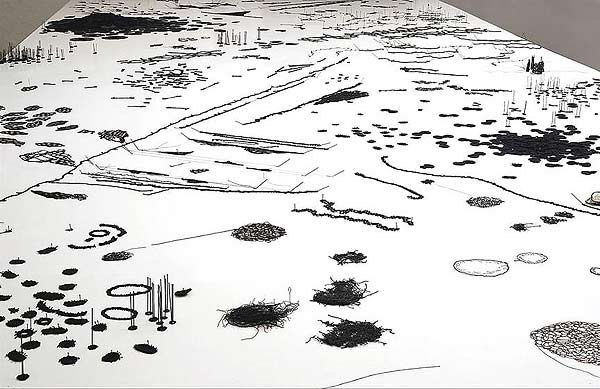Robert Irwin"Perhaps the future role of the artist will be to act directly as the arbiter of qualities in our lives. Quality not as an add-on, as it is now, but as criteria in all matters of planning."
-Robert Irwin, Cullinan Lectures, Rice Univeristy, 1978-88.
 Part 1: Prologue: x18^3
Part 1: Prologue: x18^3Currently living in San Diego, California, Irwin was born in Long Beach, California in 1928 and studied at the Otis Art Institute, the Jepson Art Institute and the Chinouard Art Instiute beginning in 1948 continuing until 1954. His first solo exhibition was in 1957.
“I tell people this will look like a group show,” said the San Diego museum’s director, Hugh Davies, a close friend of Mr. Irwin. “There will be Abstract Expressionist paintings, Minimalist paintings, architectural work. It’s all over the map. He doesn’t have a signature style.”
Robert Irwin is an artist of a multitude of mediums, and has an experimental attitude towards his exhibitions, stating:
“There’s no way to really mock up or simulate what I’m doing until I’m there,” he said. “An exhibition for me is not a statement but an experiment.”
 The Central Garden of the Getty Center, Los Angeles
The Central Garden of the Getty Center, Los AngelesReferences:
Finkel, Jori,
Artist of Light, Space and, Now, Trees, The New York Times,
http://www.nytimes.com/2007/10/14/arts/design/14fink.html?_r=1, October, 14, 2007.
Gardens (Visit the Getty), The Getty Center Los Angeles,
http://www.getty.edu/visit/see_do/gardens.html, Last Viewed: January 29, 2009.
Robert Irwin, Excursus: Homage to the Square, Dia Art Foundation, http://www.diabeacon.org/exhibs/irwin/excursus/index.html, Last Viewed: January 29, 2009.
- Bradley Angell
 She does plasma cut steel and iron sculptures, and the detail is amazing. I think the rusty metal would look really striking against some bright green grass.
She does plasma cut steel and iron sculptures, and the detail is amazing. I think the rusty metal would look really striking against some bright green grass. 2) It is also very interesting to see how many different ways the energy/spirit of these elements is expressed:
2) It is also very interesting to see how many different ways the energy/spirit of these elements is expressed:



















